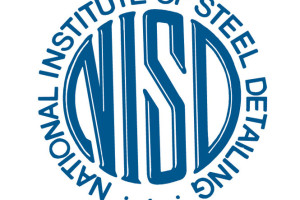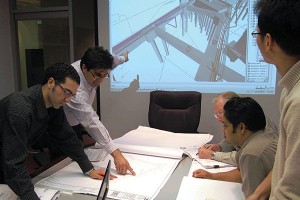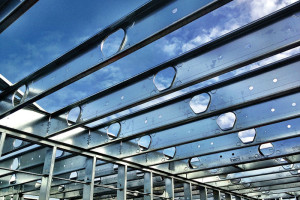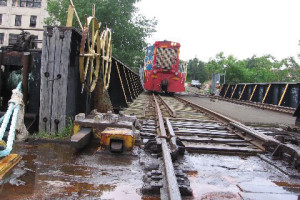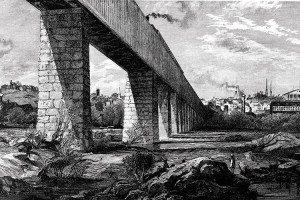Coated reinforcing steel is widely used to provide corrosion protection to reinforced concrete against the effects of deicing and marine salts and carbonation. In North America, approximately 10 percent of all reinforcing is coated. Coated reinforcing steel utilizes the existing reinforcing bar stock and is available in sizes from 0.375 to 2.25 inches and in strengths from 40 to 80 ksi. …
Yearly Archives : 2014
Founded in 1969, the National Institute of Steel Detailing or NISD is an organization which fosters a professional approach to doing business as a steel detailer in the construction industry. The mission of the group is to create a better understanding of the importance of steel detailing services, by advocating improved quality, education and certification. …
In enacting the Americans with Disabilities Act of 1990 (ADA), Congress found that individuals with disabilities continually encountered discrimination in the form of architectural barriers. To address this discrimination in privately-owned facilities, Title III of the ADA mandated that all commercial facilities and places of public accommodation constructed after January 26, 1993, be “readily accessible to and usable by” individuals with disabilities. …
Why Are They Important and What Needs To Be Done?
As current leaders in structural engineering approach the end of their careers, it is increasingly important that young professionals take active measures to step into leadership roles. Leadership transition plays a vital role in the profession, but always brings with it challenges that differ from those of past generations. This article highlights select challenges identified by the ASCE Structural Engineering Institute’s Young Professional’s Committee. …
Should Cold-Formed Steel Coursework be Included in the Structural Engineering Curriculum?
Unlike the United States Constitution, the National Council of Structural Engineers Associations (NCSEA) recommended structural engineering curriculum suggested by practitioners for structural engineers is a living document that engineers need to review on a regular basis. In some cases, such as in technical writing, the monitoring by our profession and academic institutions results in a modification to the program. …
Weidlinger Associates, Inc. was an Outstanding Award Winner for the La Plata Stadium project in the 2013 NCSEA Annual Excellence in Structural Engineering awards program (Category – International Structures over $100M).
Construction of the 53,000-seat soccer stadium in La Plata, Argentina, was interrupted in 2001, after the concrete bleachers had been poured on the earth berm and the steel-trussed compression ring had been erected to support the twin-peaked Tenstar Dome™ developed by Weidlinger Associates. …
An article in the August 2013 issue of Scientific American, “Learning in the Digital Age,” addresses the abilities of gaming technology ported over for educational use in Massively Online Open Courses (MOOC). Sugata Mitra, BBC news, noted that students in rural Africa can use Skype to get the best teachers. These stories address the availability of knowledge, not the presentation of knowledge for comprehension, speed of transfer, or integration, and are chained to the two-dimensional world. …
It is the last weekend of summer and there is a thunderstorm brewing while I am writing this article. (No, this is not another article about how climate change might affect engineers.) My youngest daughter completed her driver’s education classroom work this summer and earned her learning permit. For those of you who have not been through this, you don’t know terror like the first time your teen gets behind the wheel of your car. …
NYNJ Rail is the last remaining car float operation in the metropolitan New York area. This shortline railroad operates between Jersey City, NJ and Brooklyn, NY moving freight across New York Harbor, and is one of four remaining car float operations in the United States. The transfer bridge concept originated in the mid 1800s with a ferry between Havre de Grace and Perryville, MD for the Camden & Amboy Railroad and the Philadelphia, Wilmington and Baltimore Railroad. …
Mighty Colossus, Bestriding the Ancient Powhatan
It was early in railroad development in this country when the Richmond & Petersburg Railroad was proposed and chartered in 1836. It ran from just north of Petersburg on the north side of the Appomattox River to just south of Richmond on the James River. The charter stated the line could be extended into both Richmond and Petersburg upon the approval of the Common Council of each city. …


